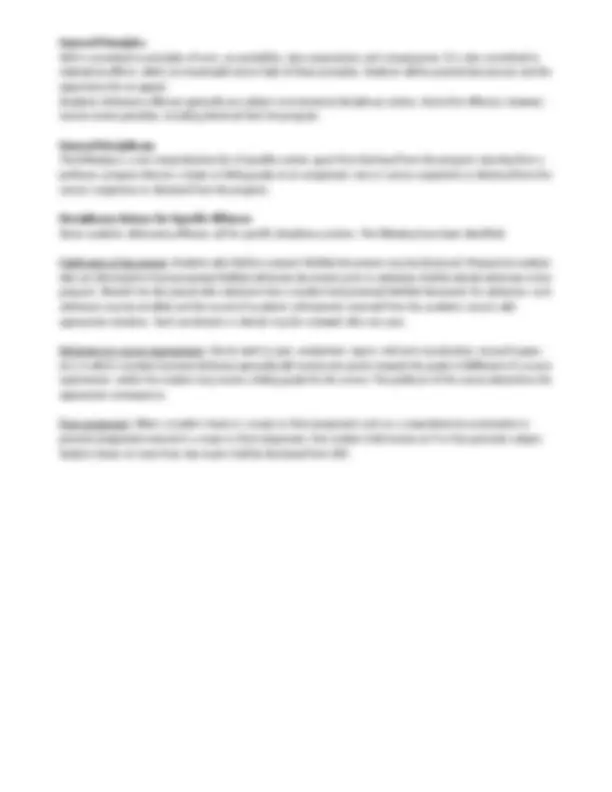



Study with the several resources on Docsity

Earn points by helping other students or get them with a premium plan


Prepare for your exams
Study with the several resources on Docsity

Earn points to download
Earn points by helping other students or get them with a premium plan
Community
Ask the community for help and clear up your study doubts
Discover the best universities in your country according to Docsity users
Free resources
Download our free guides on studying techniques, anxiety management strategies, and thesis advice from Docsity tutors
Information about a university course, eco 2306, which is an introduction to microeconomic analysis. The course is taught by dr. Kalpana pai at texas wesleyan university and covers topics such as supply and demand, consumer choice, elasticity, costs of production, competitive markets, monopolies, oligopolies, and labor markets. Students will learn how to analyze equilibrium price and quantity, compute elasticities, and distinguish between long run and short-run costs. The course requires the textbook 'the micro economy today' and meets three times a week for 130 minutes each session. Students will be evaluated through three exams and are encouraged to participate actively in classes and practice with assigned exercises.
What you will learn
Typology: Slides
1 / 3

This page cannot be seen from the preview
Don't miss anything!


ECO 2306 Principles of Economics II (Microeconomics)
Basic Information: Instructor Name Dr. Kalpana Pai Home Institution Texas Wesleyan University Instructor Title Associate Professor E- Mail kpai@txwes.edu Home Office Phone Number 817-531- Office TBA Office Hours TBA, and by appointment
Required Course Materials: Textbook Edition Author Publisher ISBN- The Micro Economy Today 13 th^ Edition Bradley, Schiller; Cynthia Hill; Sherri Wall
McGraw-Hill Higher Education
E-text 0077416619 Print 0077416538 Link to e-book purchase address: http://www.coursesmart.com/IR/1216011/0077416619?__hdv=6.
Course Hours: The course has 19 class sessions in total. Each class session is 130 minutes in length. The course meets from Monday to Thursday. Each course has a total of 40 class hours (4 credit hours). The last Thursday (July 31, 2014) is a reading day for students. Final exams are scheduled on Aug 1 and 2, 2014
Upon successful completion of the course, students will be able to:
Course Schedule: Week Session Day Topic (s) Chapter(s)
Week 1
June 30 M Introduction July 1 T Economics: The Core Issues Chapter 1 July 2 W Supply and Demand Chapter 3 July 3 Th Consumer Choice Chapter 5
Week 2
July 7 M Elasticity Chapter 6 July 8 T Review for exam 1 July 9 W EXAM 1 July 10 Th The Costs of Production Chapter 7
Week 3
July 14 M The Competitive Firm Chapter 8 July 15 T Competitive Markets Chapter 9 July 16 W Monopoly Chapter 10 July 17 (^) Th Oligopoly Monopolistic Competition
Chapter 11 Chapter 12
Week 4
July 21 M Review for Exam 2 July 22 T EXAM 2 July 23 W Natural Monopolies: (De) Regulation? Chapter 13 July 24 Th The Labor Market Chapter 16
Week 5
July 28 M Financial Markets Chapter 18 July 29 T Taxes: Equity Vs Efficiency Chapter 19 July 30 W Review for Final exam July 31 Th Reading day Final Exam
Evaluation: Students will be evaluated via 3 exams (all exams will be in a multiple choice test format). Students are encouraged to participate actively in classes and to practice with the assigned exercises.
Grading Policies: Part Percentage Exams EXAM 1 30% EXAM 2 30% FINAL EXAM 40% Course Total 100%
Academic Integrity SCP expects honesty from students in presenting all of their academic work. Students are responsible for knowing and observing accepted principles of scholarly research and writing in all academic work.
Academic dishonesty or cheating includes acts of plagiarism, forgery, fabrication or misrepresentation, such as the following: